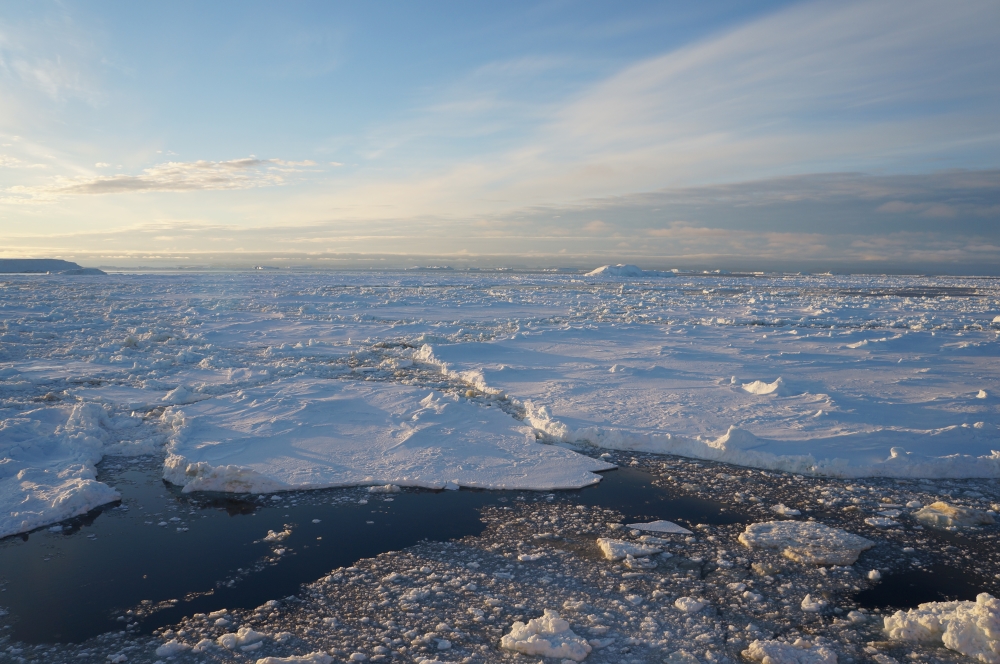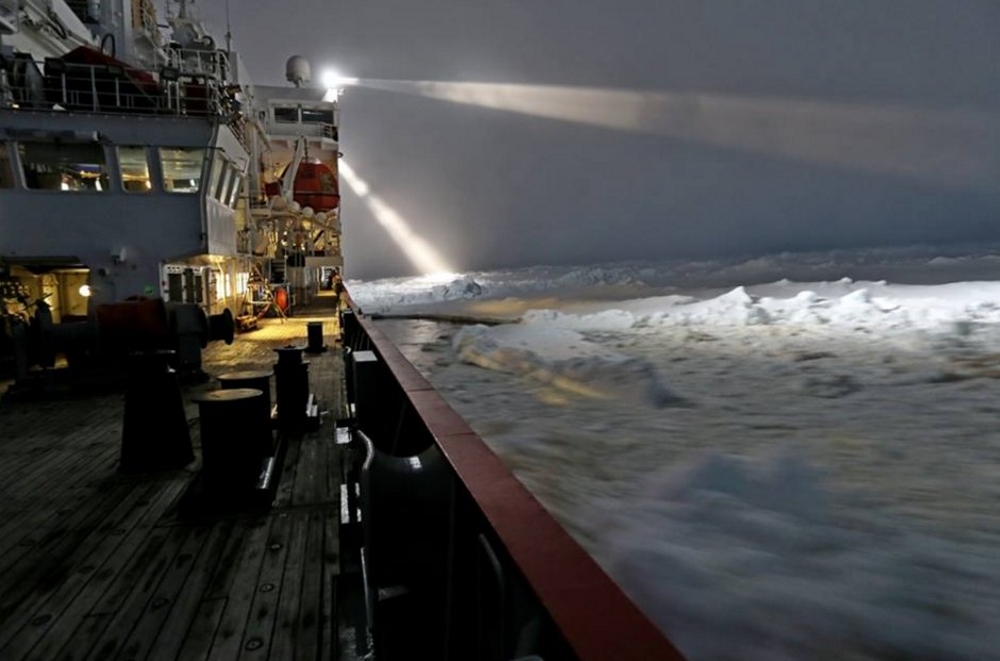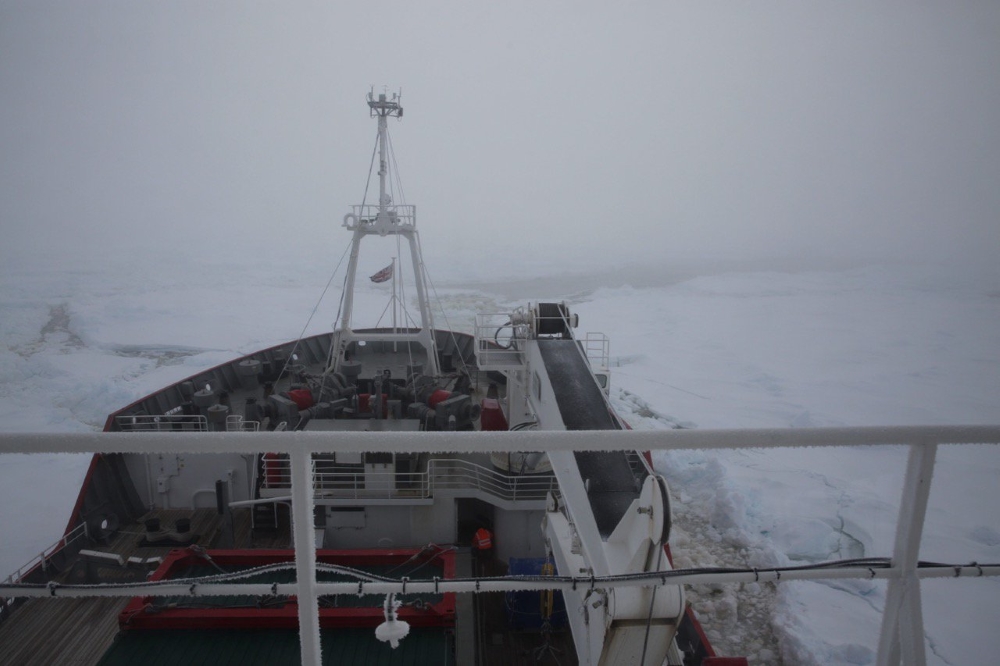Expedition to 'Hidden' Antarctic Ecosystem Turned Back by Heavy Ice

Scientists on their way to investigate a mysterious region of Antarctica's seafloor, hidden by thick ice for 120,000 years, have run into an obstacle: Their research ship has been forced to turn north, after dense sea ice prevented it from reaching the southern Larsen C ice-shelf.
The British Antarctic Survey (BAS) announced today (March 2) that the captain of the research vessel RRS James Clark Ross had made the "difficult decision" to turn back from the Larsen C region after encountering pack sea ice up to 16 feet (5 meters) thick.
The thick ice has slowed the ship to a few miles a day, and they were running out of time in the Antarctic's brief summer to reach the Larsen C area and complete a marine survey. The seafloor alongside the ice-shelf was exposed last year after the calving of the giant iceberg known as A-68. [In Photos: Antarctica's Larsen C Ice Shelf Through Time]
"We knew that getting through the sea ice to reach Larsen C would be difficult," BAS expedition leader and marine biologist Katrin Linse said in a statement. "Naturally, we are disappointed not to get there, but safety must come first."
"The captain and crew have been fantastic and pulled out all the stops to get us to the ice shelf, but our progress became too slow, with just 8 kilometers [5 miles] traveled in 24 hours, and we still had over 400 kilometers [250 miles] to travel," Linse said. "Mother Nature has not been kind to us on our mission."
Deep south
The expedition team on board the RRS James Clark Ross, hailing from nine polar research institutes in Europe and Australia, was put together at very short notice. They had hoped to be the first to survey the region of seafloor exposed by the 2,240-square-mile (5,800 square kilometers) iceberg, which separated from the Larsen C Ice Shelf in July of last year.

The ecosystems of the seafloor beneath Antarctica's floating ice shelves are unique and rarely studied: According to BAS scientists, the seafloor exposed by the A-68 iceberg has been completely covered by the ice shelf for up to 120,000 years, in total darkness and connected to the open ocean by only minimal currents.
Sign up for the Live Science daily newsletter now
Get the world’s most fascinating discoveries delivered straight to your inbox.
The expedition scientists were rushing to carry out a marine survey of the exposed area before it becomes increasingly bathed in sunlight as the A-68 iceberg moves away. Although the sea ice in the area is thick enough to turn back the research ship, it won't be enough to stop sunlight from reaching the exposed seafloor, BAS spokesperson Athena Dinar told Live Science. "The wind will move the sea ice, and the sea will be exposed to sunlight." [Antarctica Photos: Meltwater Lake Hidden Beneath the Ice]
Scientists will now have to wait out the Antarctic winter until the next attempt to reach the edge of the ice shelf early next year, by an expedition led by Germany's Alfred Wegener Institute on board their research vessel, the RV Polarstern, BAS representatives said in a statement.
New destination
Although they won't reach the Larsen C area — the southernmost of three large ice shelves on the east side of the Antarctic Peninsula — the scientists on board the RRS James Clark Ross will turn their attention farther north, to the Larsen A Ice Shelf and the Prince Gustav Channel Ice Shelf, both of which broke apart in 1995.

"We have a 'Plan B' — we will head north to areas which have never been sampled for benthic [deep-sea] biodiversity," Linse said in the statement. "We'll be sampling deeper than we planned at Larsen C — down to 1,000 meters [3,300 feet] — so we're excited about what deep-sea creatures we might find."
The team would spend the remainder of the mission collecting seafloor animals, microbes, plankton, sediments and water samples, BAS representatives said in the statement. Their findings will provide a benchmark of the seafloor biodiversity in this area and a more accurate time frame for the retreat of ice sheets from the eastern side of the Antarctic Peninsula.
This is the 14th shipboard expedition to the Antarctic for expedition leader Linse, who is now scheduled to join the RV Polarstern expedition to the Larsen C area in early 2019. Her own research focuses on the biodiversity of Antarctic and deep-sea animals — in particular, mollusks such as snails, clams and mussels.
"I got the Antarctic bug when I went in 1998 to Antarctica the first time," Linse told Live Science last month, before embarking on the RRS James Clark Ross. "I like the vast environment, the beauty of the ice [and] the great team feeling at sea. And I like a ship's rolling movements and the salty air."
Original article on Live Science.
Tom Metcalfe is a freelance journalist and regular Live Science contributor who is based in London in the United Kingdom. Tom writes mainly about science, space, archaeology, the Earth and the oceans. He has also written for the BBC, NBC News, National Geographic, Scientific American, Air & Space, and many others.










